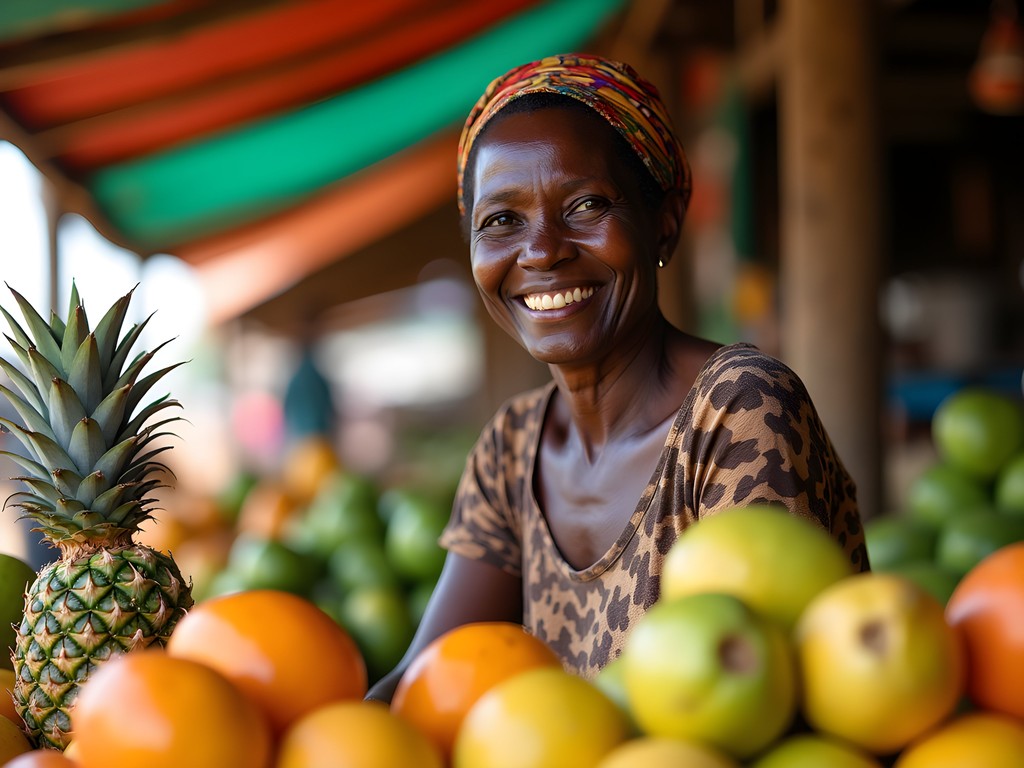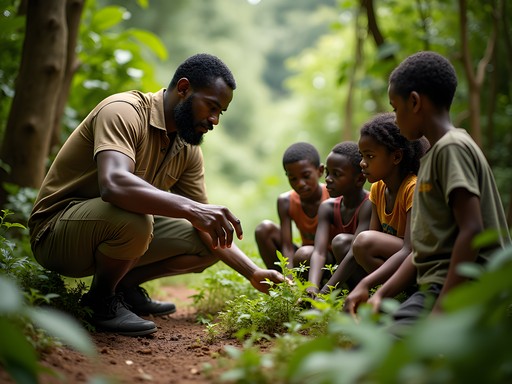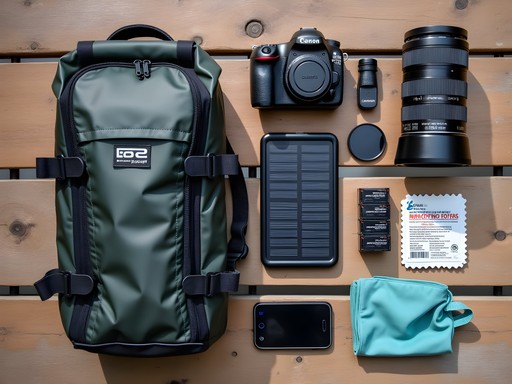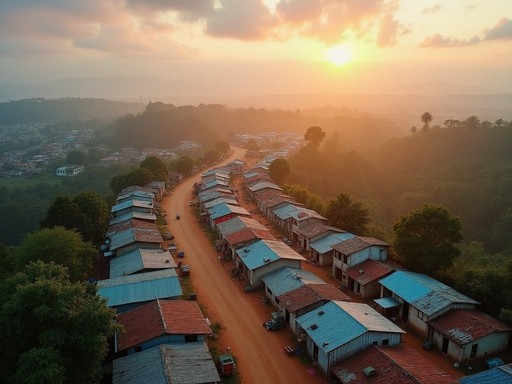Disclosure: This article contains affiliate links. We may earn a commission from purchases at no extra cost to you, which helps our travel content.
The first thing that hits you in Kenema isn't visual—it's the symphony of scents. Charcoal fires, palm oil, tropical flowers, and red earth create an olfactory fingerprint as unique as Sierra Leone itself. As a veterinarian accustomed to clinical environments, this sensory immersion reminded me why I travel with my camera: to capture not just images, but entire experiences. My two weeks in Sierra Leone's eastern province would challenge my photography skills, cultural adaptability, and preconceptions about a region often misrepresented in Western media.
Navigating Ethical Photography in Kenema's Markets
Kenema's central market pulses with an energy that's simultaneously chaotic and perfectly orchestrated. Vendors arrange pyramids of mangoes and cassava alongside handcrafted baskets, while conversations in Krio and Mende create a linguistic tapestry as colorful as the textiles for sale. But photographing here requires more than technical skill—it demands cultural sensitivity.
My approach evolved quickly after my first day. I learned to establish rapport first, camera second. My standard practice became wandering the market empty-handed initially, purchasing fruits or small crafts, exchanging greetings, and only then mentioning my interest in photography. This patient approach yielded not just consent but genuine connections.
One fruit vendor, Aminata, initially shied away from my lens but later invited me to photograph her stall after we bonded over my stories of Filipino market traditions from my mother's homeland. Her proud smile as she displayed her perfectly arranged pineapples became one of my favorite captures—authentic because it emerged from mutual respect rather than a transactional 'point-and-shoot' encounter.
When documenting markets, my camera harness proved invaluable, keeping my equipment secure yet accessible while leaving my hands free for greetings and purchases. Its cross-body design drew far less attention than a traditional camera strap, helping me blend in more effectively.

💡 Pro Tips
- Learn basic greetings in Krio and Mende—'Kushe-o' (hello) and 'Tenki' (thank you) go a long way
- Establish rapport before revealing your camera—buy something small, chat, then ask permission
- Consider printing small photos to give back to subjects on your next market visit
The Wildlife Corridors: Where Veterinary Knowledge Meets Photography
My veterinary background has always informed my travel photography, but never more profoundly than in Sierra Leone's eastern region. The forests surrounding Kenema represent critical habitat corridors for endangered primates, including the vulnerable Diana monkey and western chimpanzee. Documenting these areas required specialized knowledge, patience, and ethical considerations.
After connecting with local conservation group Tacugama, I spent three days accompanying their field researchers through forest transects. Rising at 4:30 AM, we'd venture into the misty forest edges where human settlements meet wilderness—zones of both conflict and coexistence. My telephoto lens proved essential for maintaining appropriate distance from wildlife while still capturing intimate behavioral moments.
The most challenging yet rewarding photography came during a community conservation meeting where former hunters now employed as eco-guides discussed sustainable forest management. The interplay of skepticism, hope, and determination on their faces told a complex story about conservation's human dimensions. Shooting in the dimly-lit community hall tested my low-light photography skills, but the portable LED light provided just enough supplemental illumination without disrupting the natural atmosphere.
Perhaps my most treasured image from this segment captures a former hunter gently pointing out a camouflaged tree hyrax to a group of schoolchildren—embodying the transition from exploitation to stewardship that represents Sierra Leone's conservation future.

💡 Pro Tips
- Invest in a good telephoto lens for wildlife photography—400mm minimum for primates
- Carry silica gel packets in your camera bag to combat the extreme humidity
- Partner with local conservation organizations for ethical wildlife viewing opportunities
Documenting Resilience: Post-Conflict and Post-Ebola Narratives
Sierra Leone's recent history bears the deep scars of civil war (1991-2002) and the 2014-2016 Ebola outbreak. In Kenema, which experienced both traumas intensely, photography becomes a delicate balancing act between documenting resilience and avoiding exploitation of suffering.
I approached this challenge by seeking community-led storytelling opportunities. Through connections at my guesthouse, I met Ibrahim, a motorcycle taxi driver who survived the war as a child and later worked as an Ebola response driver. Rather than photographing obvious symbols of hardship, I accompanied Ibrahim for two days as he navigated his daily routine—capturing moments that illustrated recovery and forward momentum.
The technical challenges were substantial. Riding on the back of Ibrahim's motorcycle while shooting required both specialized equipment and technique. My camera stabilization strap proved invaluable, while the weatherproof camera cover protected my equipment during sudden tropical downpours.
Perhaps the most powerful images emerged when we visited Ibrahim's sister's small tailoring business, established with a microloan after the Ebola crisis. The pride in her eyes as she demonstrated her sewing machine to neighborhood children transcended the simplified narratives of victimhood often imposed on Sierra Leoneans by outside media. These were stories of resilience, entrepreneurship, and community—narratives that deserved thoughtful visual documentation.

💡 Pro Tips
- Focus on stories of resilience and rebuilding rather than trauma tourism
- Use a stabilization system when shooting from moving vehicles
- Build relationships that allow for authentic documentation of daily life
Technical Challenges: Mastering Photography in Kenema's Conditions
Photographing in Kenema presents unique technical challenges that demand specialized equipment and adaptability. The region's dramatic contrast between harsh midday sun and deeply shadowed interiors tests even experienced photographers, while dust, humidity, and limited electricity access add further complications.
My daily photography kit evolved significantly after my first few days. I abandoned my standard camera backpack for a more practical waterproof camera bag that better protected against sudden downpours while providing easier access in crowded settings. The bag's multiple access points meant I could retrieve equipment without displaying all my gear—an important security consideration.
Kenema's intense contrasts between bright sunlight and deep shadow required technical solutions. I relied heavily on my polarizing filter to manage glare and enhance colors, particularly when photographing the vibrant textiles at the market or the lush forest landscapes. For indoor settings like community meetings or homes, I found my reflector disc indispensable for softening shadows without intrusive artificial lighting.
Power management became a daily puzzle. With electricity unreliable even in Kenema town, I carried multiple camera batteries and a solar power bank that could recharge both my camera batteries and phone during daylight hours. This setup freed me from dependence on grid electricity and extended my shooting capabilities into remote areas.

💡 Pro Tips
- Schedule your shooting around the golden hours (6-8am and 4-6pm) to avoid harsh midday light
- Bring twice as many batteries and memory cards as you think you'll need—charging opportunities are limited
- Use a polarizing filter to manage the extreme contrast of equatorial light
Final Thoughts
As my bush taxi bumped along the red-earth road leaving Kenema, I scrolled through my camera's memory card—not just reviewing images but revisiting connections. The fruit vendor who taught me Mende phrases between sales. The former hunter whose knowledge of primate behavior surpassed most textbooks I'd studied. The children who transformed from camera-shy to confidently directing their own portraits.
Photographing Kenema demanded technical skill, cultural sensitivity, and ethical awareness beyond what more tourist-oriented destinations require. Yet these very challenges produced images with depth and authenticity often missing from polished travel portfolios. Sierra Leone taught me that meaningful travel photography isn't about capturing picture-perfect scenes, but about documenting genuine human connections across perceived differences.
If you're considering this journey, prepare thoroughly but hold your plans loosely. Bring proper equipment but prioritize relationship-building over gear. And most importantly, approach each interaction with humility—understanding that the privilege of photographing someone's life, culture, or community is exactly that: a privilege to be earned rather than expected. When you do, Kenema will reveal itself not just as a subject for your lens, but as a profound teacher of photography's deeper purpose.
✨ Key Takeaways
- Build relationships before taking photographs—connections lead to more authentic images than technical skill alone
- Sierra Leone challenges photographers to move beyond stereotypical 'Africa' imagery toward more nuanced visual storytelling
- Proper equipment preparation is essential given the humidity, dust, and limited electricity access in Kenema
📋 Practical Information
Best Time to Visit
November-April (dry season)
Budget Estimate
$40-70 USD per day (excluding international flights)
Recommended Duration
Minimum 10 days, ideally 2 weeks
Difficulty Level
Challenging















Comments
Hayden Butler
Casey, your post captures the essence of Sierra Leone beautifully. I'd add for anyone planning to visit Kenema - the central market is most photogenic in early morning (6-8am) when the light cuts through the stalls at dramatic angles. The technical challenges you mentioned with humidity are real! I learned the hard way to bring silica gel packets and store everything in ziplock bags overnight. Also worth noting that power outages are common, so having multiple batteries is essential. The resilience narrative you captured is what makes Sierra Leone such a profound place to photograph - there's a story in every face that goes far beyond the simplistic narratives we often see about the region.
luckyexplorer
Heading to West Africa next month! Is Kenema doable as a solo female traveler?
journeydiver
I went solo (female) last year! Definitely doable but I'd recommend connecting with local guides for certain areas. The people were incredibly welcoming.
mountainone
The wildlife corridor section was fascinating. Never would have thought about combining vet knowledge with photography!
Adam Nichols
Casey, this is an exceptional piece that goes beyond the typical travel photography narrative. Your section on documenting post-conflict resilience particularly resonated with me. I spent three weeks in Sierra Leone in 2023 documenting similar themes, and the balance between respectful documentation and avoiding poverty tourism is indeed delicate. I found that my Sony a7III performed admirably in those challenging lighting conditions you mentioned - the dynamic range helped tremendously with the harsh contrasts. Did you find yourself gravitating toward certain focal lengths while there? I found myself using a 35mm prime almost exclusively for street photography in similar contexts.
mountainone
Adam - was it difficult to travel with expensive camera gear in SL? Any security concerns?
Adam Nichols
I kept my gear minimal and in an unassuming bag. Never had issues, but I was always conscious about when and where I took it out. Common sense goes a long way!
nomadstar
Those market photos are incredible! The colors are so vibrant!
journeydiver
The way you described the scents of Kenema took me right back to my time in Ghana! There's something about that distinct mix of charcoal, food, and earth that's so uniquely West African. I really appreciated your section on ethical photography in the markets. I've always struggled with wanting to capture authentic moments without being intrusive. Did you find most people were open to being photographed after you asked permission? I've had mixed experiences with this approach - sometimes it leads to more posed, less natural shots.
wanderlustrider
This post really captured my imagination! I've been wanting to visit West Africa for years but always hesitated because of safety concerns. How did you navigate that aspect in Kenema? And what camera settings worked best for you in those high-contrast lighting conditions you mentioned?
Hayden Butler
Not Casey, but I was in Sierra Leone last year. The country has come a long way since the civil war. Basic precautions like not flashing valuables and staying aware of your surroundings are enough in most areas. Kenema felt quite safe to me during daylight hours.
wanderlustrider
Thanks Hayden! That's reassuring to hear. Did you hire a local guide or navigate on your own?
Hayden Butler
I used a guide for the first two days to get oriented, then explored independently. Money well spent - gave me cultural context I would've missed otherwise!
luckybackpacker
Just booked my flight to Freetown after reading this! Planning to spend at least 3 days in Kenema. Casey, your description of the scents and sounds has me so excited! Any recommendations for local guides?
Casey Torres
That's amazing! You're going to love it. I worked with Ibrahim from Kenema Cultural Tours - he's knowledgeable, speaks excellent English, and has deep connections throughout the region. The tourist board office in Kenema can connect you with him. Have an incredible trip!
wildguy
Is it safe for solo travelers? The post-conflict stuff makes me nervous but your photos make me want to go!
luckybackpacker
I went solo last year! Felt very safe in Kenema. People were incredibly welcoming. Just use common sense like anywhere else. The guesthouse owners look out for you too!
Hunter Thompson
Definitely doable solo! I'd recommend connecting with locals through your accommodation. The Sierra Leone Tourist Board has improved things a lot in recent years. Just be prepared for some infrastructure challenges - power cuts are common!
wavelover
Those market photos are incredible! The colors are so vibrant!
hikingfan1126
Right? Makes me want to visit just to experience those markets firsthand.
Venture X
Premium card with 2X miles, $300 travel credit, Priority Pass